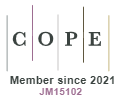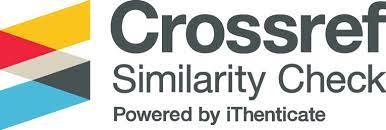Changes in the Key Economic Indicators in Japan, Poland, the United States and the Euro Area in the 21st Century
DOI:
https://doi.org/10.18778/2391-6478.4.40.08Keywords:
economic variables, unemployment, economic growth, GDP per capita, interest rates, inflation, General Government debt, quantitative easingAbstract
The aim of the article is to identify the changes of selected economic variables in Japan, Poland, the USA and the euro area and to evaluate the impact of these variables on these economies in 2000–2022.
The hypothesis posed in the article: The economies of Japan, Poland, the USA and the euro zone have overcome the economic shocks that occurred in the first two decades of the 21st century.
Methodology: The study included a review of the literature on the subject, the presentation and analysis of statistical data, including its graphical presentation. Six economic indicators were selected for analysis, such as: the unemployment rate, inflation, General Government debt, long-term interest rates, GDP per capita, and GDP growth in Japan, Poland, the United States and the euro area in 2000–2022.
Results of the research: Over the past 20 years, economies have been hit by unprecedented crises such as the Global Financial Crisis (GFC) and Covid-19, and yet we note that the surveyed countries and the euro zone showed positive economic growth for most of the period and successfully fought unemployment. Japan tried to get out of periods of deflation, but out of the examined 23 years, deflation was recorded in Japan for 15 years. In the years 2000–2022, the highest economic growth was most often recorded in Poland and the lowest in Japan, but the highest inflation was also most often recorded in Poland. In all the surveyed countries and the euro zone, a tendency to increase the GG of debt was clearly noticed.
Downloads
References
Andrade P., Breckenfelder J., De Fiore F., Karadi P., Tristani O. (2016), The ECB's asset purchase program: an early assessment, Working Paper Series, ECB.
Google Scholar
DOI: https://doi.org/10.2139/ssrn.2839812
Attinasi M. G., Klemm A. (2014), The Growth Impact of Discretionary Fiscal Policy Measures, European Central Bank.
Google Scholar
DOI: https://doi.org/10.2139/ssrn.2461260
Bank of England (2023), https://www.bankofengland.co.uk/monetary-policy/quantitative-easing [Accessed: 24.04.2023].
Google Scholar
Berkmen P. (2012), Bank of Japan’s Quantitative and Credit Easing: Are They Now More Effective?, IMF.
Google Scholar
DOI: https://doi.org/10.2139/ssrn.1997715
Bhattacharya J., Haslag J., Martin A. (2009), Optimal monetary policy and economic growth, European Economic Review.
Google Scholar
DOI: https://doi.org/10.1016/j.euroecorev.2008.03.003
Blanchard O., Tashiro T. (2019), Rethinking Fiscal Policy in Japan, https://www.piie.com/commentary/ [Accessed: 12.04.2023].
Google Scholar
Blanchflower D.G., Bell D., Montagnoli A., Moro M. (2014), The Happiness Trade-Off between Unemployment and Inflation, Journal of Money, Credit and Banking, Supplement, Vol. 46, No. 2, The Ohio State University.
Google Scholar
DOI: https://doi.org/10.1111/jmcb.12154
Bobrowska A. (2013), Migracje Polaków po przystąpieniu do Unii Europejskiej, Coloquium Wydziału Nauk, Issue 2, pp. 49–64.
Google Scholar
Buiter W. H. (1999), The Fallacy of the Fiscal Theory of the Price Level, Nber Working Paper, No. 7302, National Bureau of Economic Research, Cambridge, Massachusetts.
Google Scholar
DOI: https://doi.org/10.3386/w7302
Canzoneri M., Cumby R. E., Diba B.T. (2001), Is the Price Level Determined by the Needs of Fiscal Solvency?, American Economic Review, Vol. 91, No. 5, pp. 1221–1238.
Google Scholar
DOI: https://doi.org/10.1257/aer.91.5.1221
Dooley B. (2022), Why Japan Stands Virtually Alone in Keeping Interest Rates Ultralow, https://www.nytimes.com/2022/10/21/business/japan-interest-rates.html [Accessed: 24.04.2023].
Google Scholar
Engemann K. (2019), What Is Quantitative Tightening?, Sant Louis: Federal Reserve Bank of St. Louis.
Google Scholar
European Union (1992), Traktat o Unii Europejskiej, Maastricht: European Union.
Google Scholar
Ferguson A. (2010), When Money Dies: The Nightmare of Deficit Spending, Devaluation, and Hyperinflation in Weimar Germany, New York: Public Affairs.
Google Scholar
Friedman M. (1969a), The Optimum Quantity of Money, [in:] The Optimum Quantity of Money: And Other Essays, Aldine: Macmillan, pp. 1–50.
Google Scholar
Friedman M. (1969b), The Role of Monetary Policy, [in:] The Optimum Quantity of Money: And Other Essays. Chicago: Aldine: Macmillan, pp. 95–110.
Google Scholar
FOMC (2009), http://www.federalreserve.gov/ [Accessed: 25.05.2023].
Google Scholar
FOMC (2010), http://www.federalreserve.gov/ [Accessed: 25.05.2023].
Google Scholar
FOMC (2012), http://www.federalreserve.gov/ [Accessed: 25.05.2023].
Google Scholar
FOMC (2013), http://www.federalreserve.gov/ [Accessed: 25.05.2023].
Google Scholar
Foster S. (2022), What is the Federal Reserve`s balance sheet?, https://www.bank-rate.com/banking/federal-reserve/ [Accessed: 25.05.2023].
Google Scholar
Guisinger A., Hernandez-Murillo R., Owyang M.T., Sinclair T.M. (2017), A State-Level Analysis of Okun's Law, Federal Reserve Bank of St. Louis Working Paper 2015-029, https://doi.org/10.20955/wp.2015.029.
Google Scholar
DOI: https://doi.org/10.26509/wp-201523
Hanke S. H. (2021), Hanke’s 2020 Misery Index: Who’s Miserable and Who’s Happy?, https://www.nationalreview.com/2021/04/hankes-2020-misery-index-whos-misera-ble-and-whos-happy/ [Accessed: 20.04.2023].
Google Scholar
Hannon P. (2023), Eurozone’s Economy Outpaced China and U.S. in 2022, https://www.wsj.com/articles/eurozones-economy-outpaced-china-and-u-s-in-2022-11675161027 [Accessed: 20.04.2023].
Google Scholar
Hertel K., Humanicki M., Kitala M., Kleszcz T., Kuziemska-Pawlak K., Mućk J., Rybaczyk B., Stefański M. (2022), The impact on the Polish economy of the Structural Open Market Operations program conducted by NBP, Warsaw: NBP.
Google Scholar
Ikeda N. (2010), 失われた30年」に向かう日本 (Japan heading towards the “lost 30 years”), https://www.newsweekjapan.jp/column/ikeda/2010/12/20-3.php [Accessed: 24.04.2023].
Google Scholar
Iwata K., Takenaka S. (2013), Central bank balance sheet expansion: Japan’s experience, [in:] Are central bank balance sheets in Asia too large?, Vol. 66, pp. 132–159.
Google Scholar
Jackson A. L. (2023), Quantitative Easing Explained, Forbes.
Google Scholar
Knotek E. S., (2007), How Useful is Okun’s Law?, Economic Review, 92(4), pp. 73–103.
Google Scholar
Kuroda H. (2019), Overcoming Deflation: Japan's Experience, International Monetary Fund.
Google Scholar
Lam W. R. (2011), Bank of Japan’s Monetary Easing Measures: Are They Powerful and Comprehensive?, IMF Working Papers.
Google Scholar
DOI: https://doi.org/10.2139/ssrn.1974832
Connolly M., Li C. (2016), Government spending and economic growth in the OECD countries, Journal of Economic Policy Reform, 19(4), pp. 386–395.
Google Scholar
DOI: https://doi.org/10.1080/17487870.2016.1213168
Ministry of Family and Social Policy (Ministerstwo Rodziny i Polityki Społecznej) (2022), Liczba osób bezrobotnych w Polsce wciąż spada.
Google Scholar
OECD (2018), Decoupling of wages from productivity: What implications for public policies?.
Google Scholar
OECD (2023a), Long-term interest rates (indicator), https://doi.org/10.1787/662d712c-en [Accessed: 30.10.2023).
Google Scholar
DOI: https://doi.org/10.1787/662d712c-en
OECD (2023b), Inflation (CPI) (indicator), https://doi.org/10.1787/eee82e6e [Accessed: 13.03.2023].
Google Scholar
OECD (2023c), General government debt, https://data.oecd.org/ [Accessed: 12.04.2023].
Google Scholar
OECD (2023d), Unemployment rate, https://data.oecd.org/ [Accessed:12.04.2023].
Google Scholar
OECD (2023e), Gross domestic product (GDP) (indicator), https://doi.org/10.1787/dc2f7 [Accessed: 15.03.2023].
Google Scholar
OECD (2023f), https://data.oecd.org/gdp/real-gdp-forecast [Accessed: 16.10.2023].
Google Scholar
Okun A. (1962), Potential GNP: its Measurement and Significance, American Statistical Association, Proceedings of the Business and Economics Section, pp. 98–103.
Google Scholar
Perman R., Tavera C. (2005), A Cross-Country Analysis of the Okun’s Law Coefficient Convergence in Europe, Applied Economics, pp. 2501–2513.
Google Scholar
DOI: https://doi.org/10.1080/00036840500366395
Phillips A. W. (1958), The Relation between Unemployment and the Rate of Change of Money Wage Rates in the United Kingdom, Economica, pp. 283–299.
Google Scholar
DOI: https://doi.org/10.1111/j.1468-0335.1958.tb00003.x
Posen A. (2003), It Takes More than a Bubble to Become Japan, Peterson Institute for International Economics.
Google Scholar
DOI: https://doi.org/10.2139/ssrn.472962
Rubino M. (2015), The effects of quantitative easing in the United States: Implications for future central bank policy makers, James Madison University.
Google Scholar
Sanchez J.M., Liborio C.S. (2012), The Relationships Among Changes in GDP, Employment, and Unemployment: This Time, It`s Different, Economics Synopses, No. 13. Economic Research, Federal Reserve Bank of St. Louis.
Google Scholar
DOI: https://doi.org/10.20955/es.2012.13
Sargent T. J., Wallace N. (1981), Some Unpleasant Monetary Arithmetic, Quarterly Review, Vol. 5, No. 3, Federal Reserve Bank of Minneapolis, pp. 1–17.
Google Scholar
DOI: https://doi.org/10.21034/qr.531
Sengupta R., Smith A. L. (2022), Assessing Market Conditions ahead of Quantitative Tightening, Economic Bulletin.
Google Scholar
Federal Reserve Bank of St. Louis (2017), Does Government Spending Stimulate the Economy? https://www.stlouisfed.org/on-the-economy/2017/december/government-spending-stimulate-economy [Accessed: 30.10.2023].
Google Scholar
Tepper T. (2022), What Are Inflation Expectations? Why Do They Matter Now? https://www.forbes.com/advisor/investing/inflation [Accessed: 25.04.2023].
Google Scholar
Woodford M. (1994), Monetary Policy and Price Level Determined in a Cash-in-Advance Economy, Economic Theory, Vol. 4, No. 3, pp. 345–380.
Google Scholar
DOI: https://doi.org/10.1007/BF01215377
Zdrojewski E., Toszewska W. (2010), Analiza Zmian Rozmiarów Bezrobocia w Polsce, Zeszyty Naukowe Instytutu Ekonomii i Zarządzania.
Google Scholar
(www1) https://www.elibrary.imf.org/ [Accessed: 30.10.2023].
Google Scholar
(www2) OECD National Accounts Database, OECD Earnings Database, https://stats.oecd.org/Index.aspx?DataSetCode [Accessed: 14.03.2023].
Google Scholar
(www3) https://fred.stlouisfed.org/series/JPNASSETS [Accessed: 20.03.2023].
Google Scholar
(www4) https://nbp.pl/en/statistic-and-financial-reporting/monetary-and-financial-sta-tistics/balance-sheet-of-nbp-monetary-approach/ [Accessed: 21.03.2023].
Google Scholar
(www5) https://fred.stlouisfed.org/series/RESPPANWW [Accessed: 22.03.2023].
Google Scholar
(www6) https://fred.stlouisfed.org/series/ECBASSETSW [Accessed: 27.03.2023].
Google Scholar
Downloads
Published
How to Cite
Issue
Section
License

This work is licensed under a Creative Commons Attribution-NonCommercial-NoDerivatives 4.0 International License.














